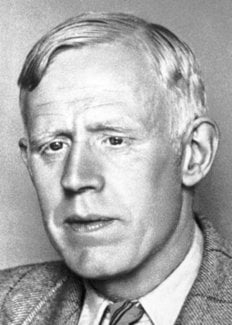Odd Hassel
Biographical

Odd Hassel was born in Kristiania (now Oslo), Norway, I7 May, 1897. His father was Ernst Hassel, a physician who specialized in gynaecology, his mother Mathilde née Klaveness.
In 1915 he entered the University of his native town where he studied mathematics and physics with chemistry as his chief subject and graduated as a cand. real. in 1920. After a year of leisure in France and Italy he went to Germany in the autumn of 1922 where he first spent more than half a year in Munich in the laboratory of Professor K. Fajans. Work on the sensibilisation of silver halides by organic dyes led to the detection of what is now termed the “adsorption indicators” After moving to Berlin Hassel worked at the Kaiser Wilhelm Institute in Dahlem, carrying out X-ray crystallographic work. During that time he obtained, on the proposal of Fritz Haber, a Rockefeller Fellowship. In 1924 he graduated as Dr. Phil. at the Berlin University. From 1925 to 1926 he worked at the University of Oslo in the capacity of “universitetsstipendiat”, from 1926 to 1934 as “dosent” in physical chemistry and electrochemistry. From 1934 to 1964 he had the chair of physical chemistry in Oslo, the first of its kind in Norway, and headed the department of physical chemistry started in 1934.
Hassel’s main interest during the first years of his teaching at the University of Oslo dealt with inorganic chemistry, but from 1930 onwards his work was concentrated on problems connected with molecular structure, particularly the structure of cyclohexane and its derivatives and other substances containing six-membered rings related to that of cyclohexane.
In order to supplement the experimental methods available two additional methods not previously used in Norway were introduced; the measurements of electric dipole moments and electron diffraction by vapours. Sufficient experimental material had been gathered by 1943 to allow more general conclusions regarding the possible configurations (conformations) and the transition between them to be drawn. A short paper had just been published in a Norwegian journal when Hassel was arrested by Norwegian Nazis and later taken into custody by the German occupants. Released in November 1944 he found the institute almost deserted. After the war experimental work could be taken up again and in particular electron-diffraction work based on the rotating sector method.
During the early 1950’s Hassel opened a new field of structure investigation, namely that of the charge-transfer compounds. Compounds formed by organic electron- donor molecules like ethers and amines and electron acceptors as halogen molecules or organic halides had mainly been investigated by spectroscopic methods. Information on the steric structures was scarce, however, and a series of structure determinations was undertaken. After some years work he was able to set up rules for the geometry of this kind of addition compounds, and this field still remains his main interest in structural chemistry.
Hassel holds honorary degrees from the Universities of Copenhagen and Stockholm. He is an honorary Fellow of the Norwegian Chemical Society and of the Chemical Society, London.
He is a Fellow of the Norwegian Academy of Sciences, the Royal Danish Academy of Sciences, the Royal Swedish Academy of Sciences and the Royal Norwegian Academy of Science. In 1964 he received the Guldberg-Waage Medal from the Norwegian Chemical Society and the Gunnerus Medal from the Royal Norwegian Academy of Sciences.
He is a Knight of the Order of St. Olav.
From 1967 a lecture is given yearly by distinguished scientists from abroad to his honour at the University of Oslo (“The Hassel Lecture”).
This autobiography/biography was written at the time of the award and later published in the book series Les Prix Nobel/ Nobel Lectures/The Nobel Prizes. The information is sometimes updated with an addendum submitted by the Laureate.
Odd Hassel died on May 11, 1981.
Nobel Prizes and laureates
Six prizes were awarded for achievements that have conferred the greatest benefit to humankind. The 14 laureates' work and discoveries range from quantum tunnelling to promoting democratic rights.
See them all presented here.
